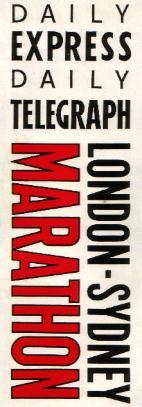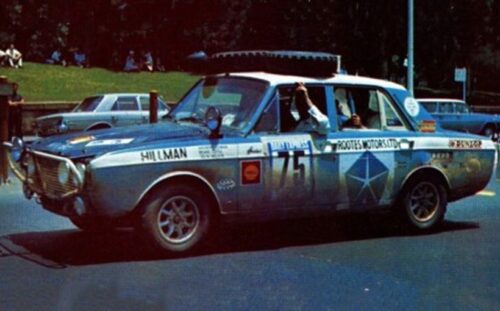
Once a week we talk about cars that have become living legends, but this and the next one will focus on two events that have forever entered the history of world motorsport, and we will start with the London-Sydney retro-rally. About tests of technics and people at a distance of more than 10 thousand kilometers — in our new issue of «Legend Alive».
In 1968, 98 crews went to start in London to fight for victory in an event that the world had not seen before. A transcontinental journey in less than a month! Madness, you will say, and we will nod in response, but somewhere deep down in our souls we will think: «Oh, how interesting it would be to write about such an event in the present». But let’s get back to the beginnings and tell a little about how the idea originated.
The rally owed its appearance to the British newspaper Daily Express, in particular, Sir Max Aitken. He wanted to sponsor an event in which UK citizens could attend. And the best option was a motorsport event, affecting as many countries as possible, including the former British colonies — Iran, Pakistan, Afghanistan, India and Australia, and showing the products of the British automobile industry. To stimulate the participants, a prize fund was created, the total amount of which reached 17 thousand pounds. The winner received 10 of them, and the runner up and the bronze medalist would get three and two thousand, respectively. In addition, a special prize was created for the best achievement of the crew from Australia. Whether 800 crews applying for participation were longing to win 10 thousand pounds, or whether they were primarily motivated by the desire to test their strengths and their cars, we may never know, but the number of applications is impressive in our time.
The transcontinental journey is itself an incredible test: to create a route from scratch, taking into account all the risks that the crews may face, establish logistics, and, in the end, do everything so that at least half of the participants reach the finish line. But, despite the second half of the 20th century and the recently ended World War II, the organizing team put a lot of effort into making it work. Eight people, led by a British pilot and rally driver Jack Sears, came up with a route that had no analogues then in the history of motorsport. Undoubtedly, the team could not foresee absolutely all the difficulties in advance, which were promised to the participants by the road, but their work was impressive. Creating a route that spans three continents in less than a month even now seems unbelievable, not saying about those times.

At the start in London, as we have already said, there were 98 crews, four of which represented the USSR in Moskvich-412 vehicles. No matter how strange it may sound, but they got to the finish line in Sydney in full force, while rivals could sometimes be struck by obstacles. Just imagine: you go in the first place most of the distance, and suddenly troubles begin to fall on you like from a cornucopia. It’s a shame, right? The role of the loser fell to Roger Clark on Lotus Cortina. Starting from the sixth stage, the Briton was incredibly lucky, but problems began at the end of the Asian segment. First, he lost time in the tenth section (Pakistan to India), and in Australia his car simply could not withstand the load and broke down. First, one of the pistons failed, then the rear axle differential also joined the previous. At the same time, Lucien Bianchi, who was following Clark onboard Citroen S21, had every chance to win, but a head-on collision 150 miles before the finish line erased all the efforts of the crew. To help the victims, Paddy Hopkirk volunteered, taking third place at that moment. Undoubtedly, if he had not stopped, he would have won the marathon, but he did what every normal person would do in a similar situation. Paddy was also offered assistance by the passing crew of Andrew Cohen, Colin Malkin and Brian Coyle, but he assured them that everything was under control, and so they went straight to victory.
By the way, Hopkirk, despite the loss of time, became the silver medalist, and a local hero Ian Vaughan, who finished third, won 4,000 pounds (2,000 for the prize rank and 2,000 for the best crew from Australia).